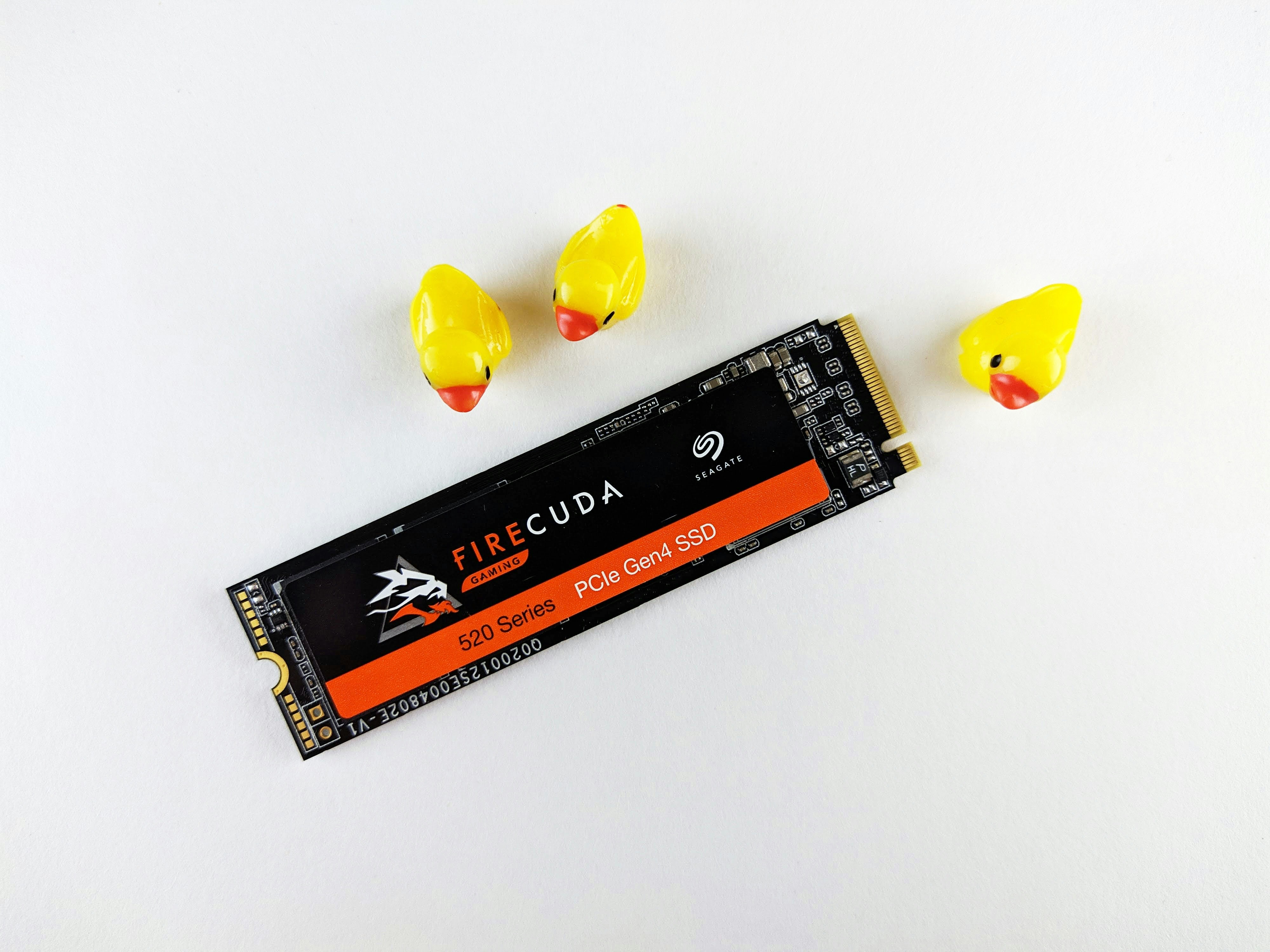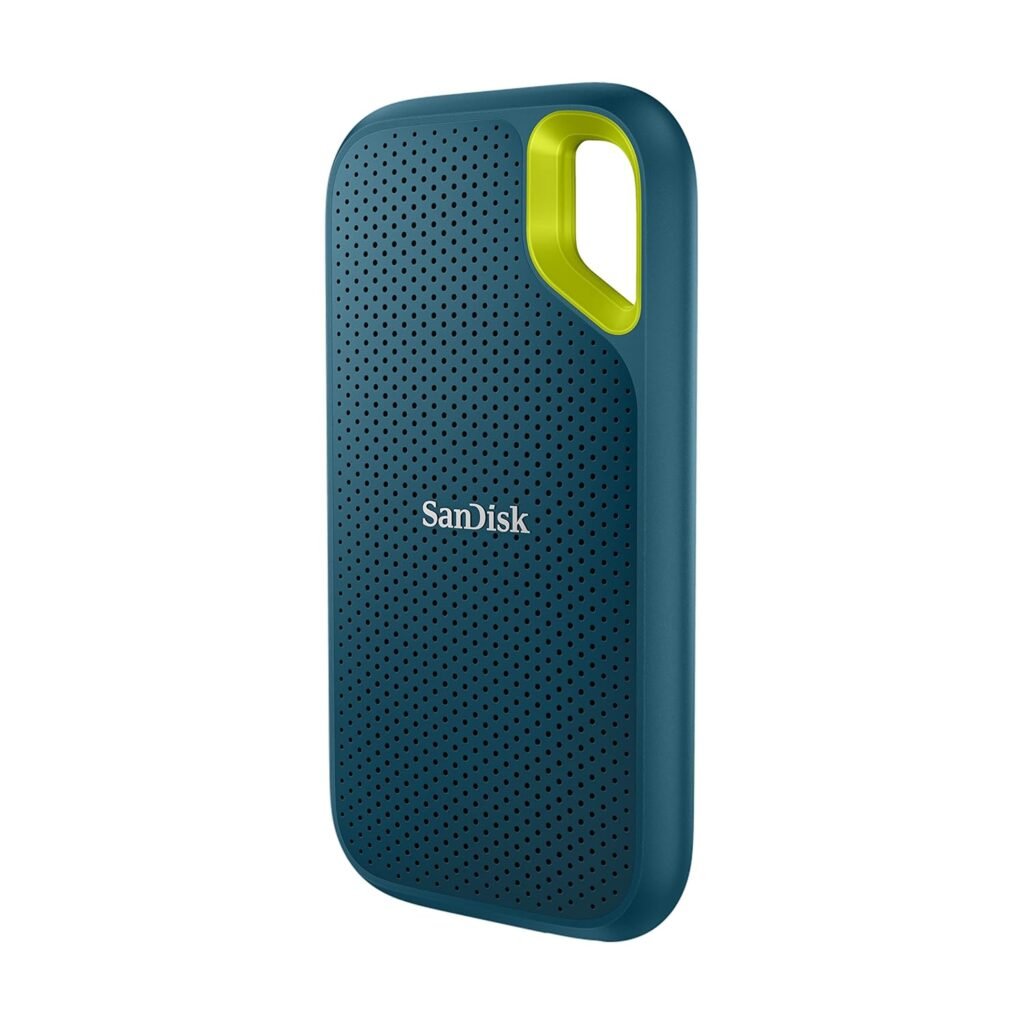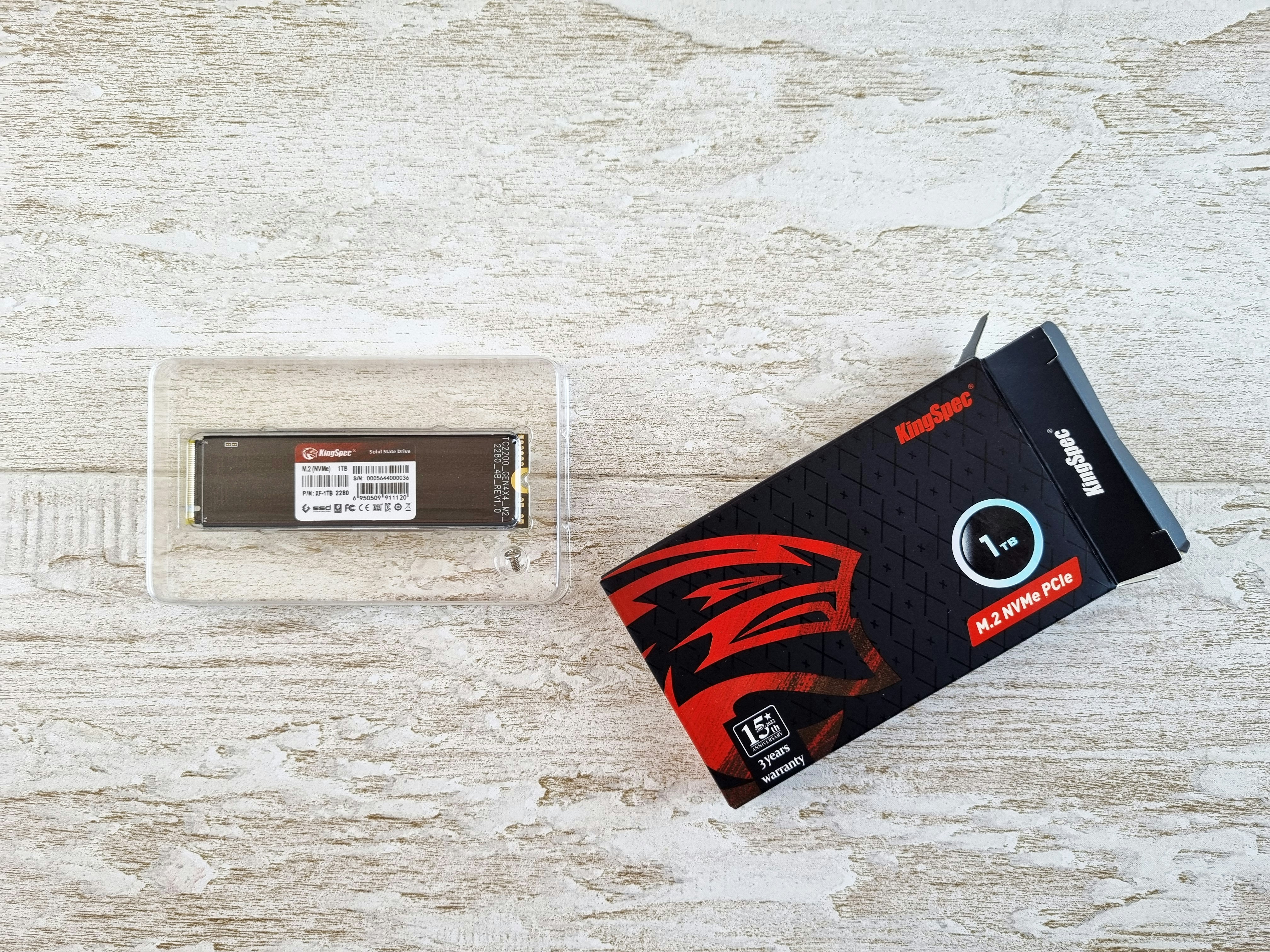Your cart is currently empty!


Introduction to 4TB SSDs
Solid-state drives (SSDs) have revolutionized data storage, offering significant advantages over traditional hard disk drives (HDDs). One of the more sizable options on the market today is the 4TB SSD, which has become increasingly important for both gaming enthusiasts and professionals in various work environments. As digital content evolves, the demand for larger storage solutions is sharper than ever, driven largely by high-definition gaming, extensive video editing, and substantial data storage needs.
The importance of a 4TB SSD stems from its ability to store vast amounts of data while providing superior performance. Unlike HDDs, which rely on spinning disks and mechanical parts, SSDs utilize flash memory technology. This allows them to access and transfer data at significantly faster speeds, reducing load times and improving overall efficiency. For gamers, the time saved in loading high-definition games can enhance the user experience, while for professionals involved in tasks such as video editing or large-scale data analysis, a 4TB SSD enables seamless performance and reliable storage.
Moreover, as games grow in complexity and file sizes increase—often exceeding several hundred gigabytes—the necessity for extensive storage capacity becomes paramount. A 4TB SSD ensures that such large files, along with numerous applications and multimedia projects, can be managed effortlessly. In professional environments where large datasets are processed or archived, the ability to quickly retrieve information without lag can lead to enhanced productivity and creativity.
In summary, the 4TB SSD is not just a storage solution; it is key to maximizing performance in today’s fast-paced digital landscape, making it an excellent choice for gaming and professional workloads alike.
Understanding SSD Technology
Solid State Drives (SSDs) have revolutionized data storage technology, offering superior performance compared to traditional Hard Disk Drives (HDDs). Unlike HDDs that use magnetic platters to read and write data, SSDs rely on flash memory chips, which allows for faster data access and improved reliability. There are primarily several types of SSD interfaces: SATA, NVMe, and M.2, each serving different user needs.
SATA SSDs are the most common and are designed to work with the SATA interface. While they provide a significant speed advantage over HDDs, the performance ceiling is limited by the SATA III bandwidth (up to 6 Gbps), resulting in read speeds typically around 500 MB/s. These drives are suitable for general computing tasks and are ideal for users upgrading from HDDs seeking improved performance without breaking the bank.
In contrast, NVMe (Non-Volatile Memory Express) SSDs utilize the PCIe interface to deliver exceptional speeds, often reaching up to 35 Gbps. This technology is particularly advantageous for power users, gamers, and professionals who engage in resource-intensive tasks such as video editing or 3D rendering. NVMe SSDs significantly reduce loading times and enhance overall system responsiveness.
M.2 SSDs refer to a physical form factor that can support both SATA and NVMe protocols. M.2 drives are compact and ideal for modern laptops and desktops where space efficiency is paramount. Users should assess compatibility with their devices, as not all M.2 slots support NVMe technology.
When evaluating SSDs, key specifications must be considered, including read and write speeds, endurance ratings (measured in TBW – Terabytes Written), and warranty periods. Higher read/write speeds enhance overall performance, while a higher endurance rating ensures long-term reliability, particularly in write-intensive scenarios. A solid warranty often reflects the manufacturer’s confidence in their product. By understanding these technologies and specifications, users can make informed decisions tailored to their specific needs.
Top Features to Consider When Buying a 4TB SSD
When seeking a 4TB SSD, it is essential to evaluate several features that can significantly impact performance for both gaming and professional work. One of the primary aspects to consider is storage speed. The read and write speeds of the SSD, often indicated by sequential read/write parameters, determine how quickly data can be accessed and saved. For gaming, a faster SSD leads to reduced loading times, which enhances overall gameplay experience. In contrast, for work-related tasks, a higher speed can facilitate efficient file transfers and system responsiveness.
Another critical feature is the form factor of the SSD. While 2.5-inch SATA SSDs are widely compatible, NVMe M.2 SSDs offer significantly faster speeds due to their direct connection to the motherboard. When examining form factors, it is essential to ensure compatibility with your existing hardware, particularly for gaming setups that may benefit from the enhanced speeds of NVMe drives.
Heat management is also a vital consideration. Good heat dissipation mechanisms such as heat sinks can prolong the life of an SSD and maintain its performance under load. This is especially important in gaming scenarios, where intensive applications can generate significant heat. Additionally, it is prudent to look into the brand reputation of the SSD manufacturer. Well-known brands usually offer reliable warranties and support, giving consumers peace of mind with their purchases.
Security features play a crucial role in safeguarding data, especially for work. Many modern SSDs come with built-in encryption capabilities that protect sensitive files from unauthorized access. Lastly, consider the price-to-performance ratio; assessing whether the features offered justify the cost is critical. Determine which specifications are most critical based on your intended use, allowing you to make a balanced decision between performance needs for gaming and functionality for professional applications.
Best 4TB SSDs for Gaming
When selecting a 4TB SSD for gaming, several factors come into play, including load times, in-game performance, and compatibility with gaming consoles and PCs. Here is a curated list of some of the best 4TB SSDs optimized for an exceptional gaming experience.
1. Samsung 870 QVO 4TB SSD
The Samsung 870 QVO utilizes SATA III technology, providing impressive read speeds of up to 560 MB/s and write speeds reaching 530 MB/s. Its 4TB capacity is ideal for gamers who want to store multiple large titles without compromising performance. The SSD also features a robust 3D QLC NAND technology that enhances durability and reliability.
Pros: Excellent reliability, easy installation, and decent pricing at approximately $400.
Cons: Slower compared to NVMe alternatives.
2. Western Digital Black SN850 4TB NVMe SSD
The Western Digital Black SN850 stands out with NVMe technology, achieving and surpassing read speeds of 7000 MB/s and write speeds of 5300 MB/s. This makes it a perfect choice for gamers who value rapid load times and seamless gameplay. Additionally, it includes the WD_BLACK Dashboard software for performance monitoring and optimization.
Pros: Superior speed, excellent thermal management, retail price around $800.
Cons: Higher cost compared to SATA options.
3. Crucial P5 Plus 4TB SSD
With its PCIe Gen 4 interface, the Crucial P5 Plus offers a remarkable balance between performance and affordability. It boasts read speeds of up to 6600 MB/s and write speeds of 5000 MB/s, ensuring fast load times and an improved gaming experience. This SSD is particularly well-suited for both gaming PCs and consoles like the PlayStation 5.
Pros: Competitive pricing at around $600, great performance.
Cons: Slightly less impressive thermal performance under heavy loads.
In selecting a 4TB SSD for gaming, it is essential to weigh the features, pros, cons, and price points of these options. The ideal choice will depend on individual gaming preferences and hardware compatibility, ensuring that gamers can enjoy an optimized gaming experience.
Best 4TB SSDs for Work
In today’s competitive professional environments, having reliable and high-performance storage solutions is paramount. For professionals like video editors, graphic designers, and data analysts, the choice of a 4TB SSD can significantly influence productivity and workflow efficiency. The ideal SSD should offer a balance of speed, reliability, and robust data transfer capabilities, important factors that can impact the execution of demanding tasks.
One standout option for professionals is the Samsung 870 QVO. Known for its outstanding read and write speeds, the 870 QVO is ideal for tasks involving large files, such as high-resolution video editing. Its SATA III interface provides a seamless experience for users needing consistent performance without the premium price tag of NVMe alternatives. The SSD is designed with enhanced reliability, backed by Samsung’s reputation in the SSD market.
For those requiring even greater read and write speeds, the Western Digital Black SN850 offers NVMe technology that stands out in the 4TB category. This SSD features exceptional speed that can drastically reduce bottlenecks during intensive tasks, making it a top choice for graphic designers who require quick access to large image files and extensive software applications. Its robust thermal management features ensure consistent performance even during heavy workloads.
The Crucial P5 Plus also deserves mention due to its competitive pricing and solid performance. This SSD allows data analysts to efficiently manage large datasets, delivering reliable speeds that facilitate quick data processing and analysis. Crucial emphasizes durability and data integrity, making it suitable for professionals who need to work with mission-critical information.
In comparison to their peers, the Samsung 870 QVO, WD Black SN850, and Crucial P5 Plus each provide unique advantages suited for different professional needs. Thus, selecting the appropriate SSD should be based on specific tasks to maximize efficiency and value in work environments.
Cost-Benefit Analysis of 4TB SSDs
When considering the investment in a 4TB Solid State Drive (SSD), potential buyers often weigh the cost against the benefits. The current price range for 4TB SSDs typically spans from approximately $300 to $600, depending on the brand, model, and performance specifications. This price point is markedly higher than that of smaller capacity SSDs, which can be as low as $50 to $200 for 500GB to 1TB options, as well as traditional Hard Disk Drives (HDDs) that offer substantial storage at lower prices, usually around $100 to $200 for 4TB units.

Despite the initial expenditure associated with 4TB SSDs, the long-term advantages present a compelling case for purchasing such a device. One key benefit is improved productivity. SSDs are significantly faster than their HDD counterparts, offering swift data retrieval and access speeds that enhance overall system responsiveness. This acceleration is particularly crucial for demanding tasks such as gaming, video editing, and large-scale data processing, where every millisecond counts. Users often report diminished loading times, allowing for a more efficient workflow.
Another important aspect is reduced downtime. SSDs are more reliable and durable than traditional HDDs due to the absence of moving parts, making them less susceptible to mechanical failure. This reliability translates into fewer system failures and maintenance requirements, ultimately saving time and reducing potential costs associated with data loss or recovery efforts.
Furthermore, the sum of these attributes culminates in a superior overall system performance. The transition from HDDs to SSDs can lead to a seamless experience, translating to both increased efficiencies and satisfaction for users across various applications and demands. Therefore, while the upfront cost of a 4TB SSD may be higher, the long-term productivity and reliability benefits present a persuasive argument for investment.
Installation and Setup Tips
Installing and setting up a new 4TB Solid State Drive (SSD) can greatly enhance your system’s performance, whether for gaming or professional work. The process varies slightly between desktop and laptop computers, but basic principles apply to both scenarios.
For desktop installation, begin by ensuring the power supply is disconnected. Open the case, usually by unscrewing or sliding off a panel. Locate an available drive bay; your new SSD will typically require a SATA connection. Secure the SSD in the bay using screws, if necessary, then connect the SATA data cable to the motherboard and the power cable from the PSU to the SSD. After successful installation, close the case and reconnect the power supply.
Laptop installations can be more challenging due to compact spaces. Power off the laptop and remove the battery if applicable. Unscrew the back panel to access the storage bay. Carefully unplug the old drive if replacing one, and slide the new 4TB SSD into the connector. Ensure it is firmly seated before securing the panel back in place. Reassemble the laptop, insert the battery, and turn it on.
Once installed, the next step is to format the SSD and set it up for use. You can accomplish this through Windows Disk Management or similar settings on other operating systems. This process will prepare the 4TB SSD for storage, allowing you to partition it as desired. For gamers and professionals, optimizing the drive’s performance is crucial. Consider using software tools like Clonezilla or Acronis True Image to clone your existing drives, transferring all data seamlessly. Furthermore, software such as Samsung Magician or Crucial Storage Executive can assist in monitoring SSD health, enabling performance optimization, and conducting firmware updates regularly.
Future-Proofing Your Storage Needs
As technology continues to advance, the demand for digital storage solutions is ever-increasing, making 4TB SSDs a pivotal consideration for both gamers and professionals. With the rapid development of high-resolution graphics, expansive open-world environments, and detailed textures, game file sizes have surged beyond historic norms. Consequently, video games now often exceed 100GB, with some titles even surpassing 200GB. This trend emphasizes the need for sufficient storage capacity to accommodate not just current software but also future releases that will likely follow this pattern.
Moreover, the digital landscape is not solely shaped by gaming; numerous industries are experiencing heightened data storage demands. From video content production and 3D modeling to software development, professionals require robust storage solutions that can keep pace with their evolving workflows. Hence, opting for a 4TB SSD is a proactive measure ensuring ample space for files, applications, and ongoing projects, addressing both current and future storage requirements.
To effectively future-proof your storage, several practices can be instituted. First, consider scalability options when selecting a 4TB SSD. Some brands offer modular systems or combinations that allow for easy upgrades, accommodating storage growth without the need for complete replacement. Additionally, choosing established brands known for their reliability and consistent software support is vital. These brands are more likely to provide firmware updates and maintenance that enhance performance and longevity.
Finally, it is beneficial to stay informed about emerging technologies and trends in data storage. For instance, the adoption of PCIe 4.0 and the forthcoming PCIe 5.0 interfaces promise increased transfer speeds, making SSDs more efficient in managing large data loads. Selecting a 4TB SSD that supports these advancements will ensure that your storage solution remains relevant and functional well into the future.
Conclusion and Final Recommendations
In summary, selecting the right 4TB SSD is a nuanced process that necessitates diligent consideration of several factors, including speed, endurance, durability, and compatibility with your devices. For gamers, particularly, choosing an SSD that provides fast read and write speeds can significantly enhance the gaming experience. With many demanding games requiring large data transfers, a reliable 4TB SSD can reduce load times and improve overall performance, offering a notable edge in competitive environments.
Professionals working in data-heavy fields, such as video editing, graphic design, or software development, will benefit from an SSD that not only offers expansive storage but also ensures data integrity and efficient performance. The outlined options are suitable for both gaming enthusiasts and professionals, each catering to distinct needs. Whether considering the read/write speed, form factor, or brand reliability, each of these elements plays a vital role in making a valuable purchase.
It is essential to assess your specific usage requirements and budget when making a choice. The market for 4TB SSDs is competitive, and while it may seem overwhelming, knowing the right features to focus on can simplify the buying process. Before committing to a purchase, it is advisable to read user reviews and compare warranties and support options, ensuring the investment in a 4TB SSD aligns with your requirements and expectations.
In conclusion, a well-informed decision can lead to a smart investment in a 4TB SSD that boosts both gaming experiences and professional workflows, effectively catering to various user needs while enhancing overall system performance.
 Store Locator
Store Locator Track your Order
Track your Order


